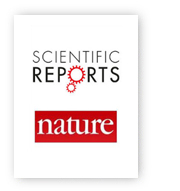The morphology, morphometry and functionality of fresh and cryopreserved wisent (Bison bonasus) epididymal spermatozoa
Maria Eberhardt; Sylwia Prochowska; Agnieszka Partyka; Wiesław Bielas; Ann Van Soom; Wanda Olech; Wojciech Niżański
Scientific Reports
Ministerial score = 140.0
Journal Impact Factor (2023) = 4.6 (Q2)
 Epididymal spermatozoa obtained post mortem are considered a valuable source of genetic material which is often irrevocably lost. This makes these gametes constitute a key element in protection and restitution programs. The wisent (Bison bonasus, Linnaeus 1758) is a species that survived in zoos after extinction from its natural habitat. This resulted in a narrowing of the genetic pool of the whole population, which is at present derived from only 12 ancestors. Currently, wisent protection programs are aimed at preserving the genetic diversity by establishing a germplasm bank. The objective of this study was to comprehensively characterize the morphology, morphometry and functionality of wisent epididymal spermatozoa and evaluate the effectiveness of their cryopreservation in extender based on Tris buffer and chicken egg yolk. The median total number of spermatozoa obtained from one individual was 1985.0 × 106 (62.5 × 106–7452.0 × 106). These gametes were characterized by median: 40.0% (0.5–70.0%) subjective motility, 69.8% (32.5–90.0%) viability and 54.3% (10.5–83.3%) normal morphology. The sperm head had a median size of 5.0 μm (3.5–6.7 μm) width, 8.5 μm (6.4–11.3 μm) length and 36.9 μm2 (23.7–48.6 μm2) surface area. The viable population of the obtained gametes was characterized by median values 53.2% (4.5–80.3%) of intact sperm membrane, 50.8 (26.0–76.6%) of intact acrosome, 0.4% (0–98.7%) of fragmented chromatin, 5.9% (0.0–88.8%) of cells with high mitochondrial potential and 42.1% (8.3–63.7%) without lipid peroxidation. The viable population of the frozen/thawed gametes was characterized by median values: 18.4% (2.4–57.9%) of intact sperm membrane, 35.1 (11.9–56.7%) of intact acrosome, 0.07% (0–89.2%) of fragmented chromatin, 12.8% (0.0–49.7%) of cells with high mitochondrial potential and 16.3% (2.2–53.6%) without lipid peroxidation. Due to the material originating from a relatively large number of wild individuals, the research presented here contributed to the description of certain species standards for the assessment of wisent epididymal spermatozoa. The presented effect of cryopreservation on these gametes justifies the use of an extender based on Tris buffer with the addition of chicken egg yolk. The obtained effects are satisfactory from the point of view of preserving valuable genetic material and their use in ART.
Epididymal spermatozoa obtained post mortem are considered a valuable source of genetic material which is often irrevocably lost. This makes these gametes constitute a key element in protection and restitution programs. The wisent (Bison bonasus, Linnaeus 1758) is a species that survived in zoos after extinction from its natural habitat. This resulted in a narrowing of the genetic pool of the whole population, which is at present derived from only 12 ancestors. Currently, wisent protection programs are aimed at preserving the genetic diversity by establishing a germplasm bank. The objective of this study was to comprehensively characterize the morphology, morphometry and functionality of wisent epididymal spermatozoa and evaluate the effectiveness of their cryopreservation in extender based on Tris buffer and chicken egg yolk. The median total number of spermatozoa obtained from one individual was 1985.0 × 106 (62.5 × 106–7452.0 × 106). These gametes were characterized by median: 40.0% (0.5–70.0%) subjective motility, 69.8% (32.5–90.0%) viability and 54.3% (10.5–83.3%) normal morphology. The sperm head had a median size of 5.0 μm (3.5–6.7 μm) width, 8.5 μm (6.4–11.3 μm) length and 36.9 μm2 (23.7–48.6 μm2) surface area. The viable population of the obtained gametes was characterized by median values 53.2% (4.5–80.3%) of intact sperm membrane, 50.8 (26.0–76.6%) of intact acrosome, 0.4% (0–98.7%) of fragmented chromatin, 5.9% (0.0–88.8%) of cells with high mitochondrial potential and 42.1% (8.3–63.7%) without lipid peroxidation. The viable population of the frozen/thawed gametes was characterized by median values: 18.4% (2.4–57.9%) of intact sperm membrane, 35.1 (11.9–56.7%) of intact acrosome, 0.07% (0–89.2%) of fragmented chromatin, 12.8% (0.0–49.7%) of cells with high mitochondrial potential and 16.3% (2.2–53.6%) without lipid peroxidation. Due to the material originating from a relatively large number of wild individuals, the research presented here contributed to the description of certain species standards for the assessment of wisent epididymal spermatozoa. The presented effect of cryopreservation on these gametes justifies the use of an extender based on Tris buffer with the addition of chicken egg yolk. The obtained effects are satisfactory from the point of view of preserving valuable genetic material and their use in ART.
DOI:10.1038/s41598-023-40798-ya









